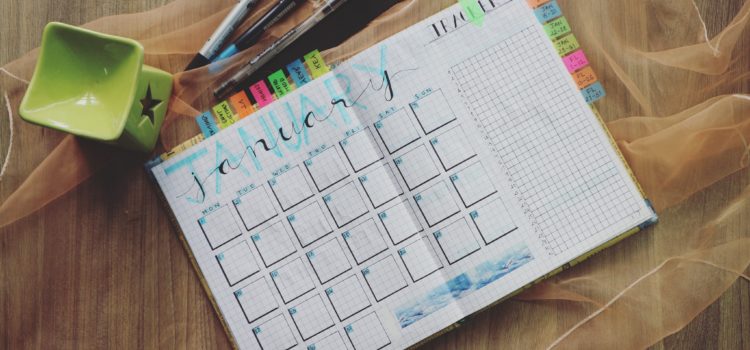

This article is an excerpt from the Shortform book guide to "How to Become a Straight-A Student" by Cal Newport. Shortform has the world's best summaries and analyses of books you should be reading.
Like this article? Sign up for a free trial here.
How should you plan your day as a college student? Should studying be the center of your attention?
How to Become a Straight A-Student by Cal Newport advises that college students should create their own schedule for studying and free time. By having a consistent schedule, you won’t feel overwhelmed or tempted to procrastinate.
Learn how to plan your day for students below.
How to Plan Your Day
Newport contends that if you want to do well in college, you must plan your day effectively. Why does this matter? If you don’t have a plan, your brain is constantly distracted by incomplete tasks so you can’t give your assignments your full attention. In contrast, when you have a plan, you forget about these other tasks and can concentrate on the task at hand—whether that’s editing your paper or enjoying lunch with a friend.
But what is the key to planning your day for students in college? Newport presents a method tailored to the ever-changing schedules of college students. To use it, you’ll need two items: a calendar and a list. The calendar should be large enough that you can fit several items in each day and can be left in your room. The list is a piece of paper you need to carry around. Divide your list into two columns titled “Schedule” and “To Remember.”
Newport’s plan is a cyclical system—so for clarity, we’ll describe his first step as if you’re already following it.
Step 1: Update your calendar. Each morning, look at the “To Remember” column of yesterday’s list. This includes any tasks or commitments you noted the previous day. Add each to your calendar, assigning days to tasks that don’t already have a designated time, like “Research English paper topic.”
Step 2: Write your schedule. In the “Schedule” column of today’s list, write down any non-negotiable commitments (like your classes). Then, look at today’s calendar. In order of priority, write down a time slot for the tasks listed on your calendar in your “Schedule” column. Be realistic: Allow yourself enough time to complete each project, eat well, and sleep at reasonable hours. Once your schedule is full, move the remaining tasks on your calendar to another day.
Not sure when to schedule a study session? Newport recommends that you do it before dinner. Most students try to study at night, but this is both prime socialization time and the period during which you have the least energy. Instead, take advantage of the small breaks in your day—like if you have 45 minutes between classes. Select several secluded places on campus where you can go to focus on your studies and spend time studying in those places alone before dinner so you can socialize afterward.
Of course, some days will require longer periods of work. But even then, Newport warns against scheduling hours of nonstop work, which will fatigue you and make you less efficient. Instead, once you’ve worked for about an hour, take a five- to 10-minute break. Research suggests this schedule will allow you to learn the most.
Step 3: Adjust your schedule as necessary. Your schedule is a guideline, not an unbreakable rule, asserts Newport—so while you should generally stick to your schedule, you can adjust it as needed. For example, say you’ve scheduled a pre-lunch study session from 11 a.m. to 1 p.m. but get invited to lunch at noon. Shuffle your schedule around so that you work from 11 a.m. to 12 p.m., have an hour-long lunch break at noon, and study when you were initially supposed to have lunch instead.
Step 4: Fill in your list. As you go about your day, each time you encounter a new task or commitment—like a party you want to go to or a deadline you must meet—write it down in your “To Remember” column. By doing so, you’ll remove the task from your brain so that you can focus on other things and still be sure that you’ll schedule it tomorrow morning when you return to Step 1.
How to Use Newport’s Scheduling System on a Smartphone
Newport doesn’t suggest using a smartphone version of his scheduling system because smartphones didn’t become popular until June 2007, six months after the release of How to Become a Straight-A Student. But his system can be easily modified for use on a smartphone—and in fact, this might save you even more time because you can get rid of the “to remember” list altogether: All you need is to carry around a smartphone with a calendar app.
Every day, simply review the daily tasks you have scheduled and shuffle them around as necessary—both in the morning and throughout the day as your commitments (like lunch) change. Then, when something new to remember comes up, simply schedule it in your calendar directly. For example, if you have a party you want to go to, you don’t need to write it in a list to empty the task from your brain and free up brainpower. You can just schedule the party directly in your calendar. Then, if you realize that the party conflicts with a study session you’ve scheduled, you can simply move that session around.
This system isn’t for everybody—you may prefer seeing your commitments on paper or become overwhelmed at the thought of having to schedule everything immediately in your calendar. But if you like Newport’s system and carry your phone everywhere, these modifications may save you time. Alternatively, you can try several other planner apps specifically designed for students.

———End of Preview———
Like what you just read? Read the rest of the world's best book summary and analysis of Cal Newport's "How to Become a Straight-A Student" at Shortform.
Here's what you'll find in our full How to Become a Straight-A Student summary:
- How to ace your college courses with just a few hours of studying each day
- How to combat procrastination and write better papers
- Study methods to prepare for different types of exams






